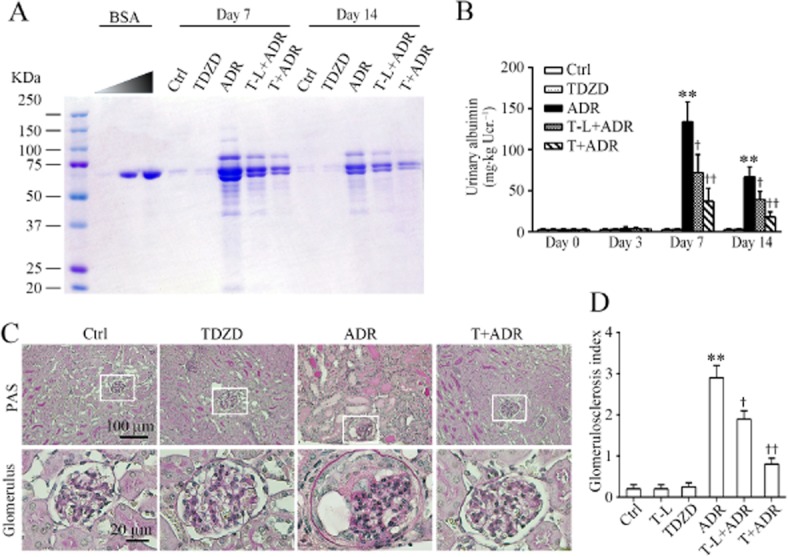Figure 1.

Inhibition of GSK3β by TDZD-8 protects against proteinuria and glomerular sclerosis mice with adriamycin nephropathy. (A) Mice were injected with adriamycin (ADR, i.v.) 1 h following a single i.p. injection of a regular (5 mg·kg−1; T) or low (1 mg·kg−1; T-L) dose of TDZD-8, a highly selective small-molecule inhibitor of GSK3β, or an equal volume of vehicle. Ctrl mice were injected with vehicle instead of adriamycin. Urine was collected at the indicated time points and subjected to SDS/PAGE and staining with Coomassie brilliant blue. BSA of 0, 1 and 4 μg, served as standard controls. Urine samples (2 μL) were collected on the post-injury days indicated from each group. (B) Quantification of urine albumin levels adjusted with urine creatinine concentrations. **P < 0.01 versus Ctrl; †P < 0.05, ††P < 0.01 versus ADR; (n = 15). (C) Representative micrographs demonstrate kidney sections stained with PAS (original magnification, ×200; ×400 for inserts). (D) Semi-quantitative morphometric estimation of glomerulosclerosis on PAS-stained mouse kidney sections. **P < 0.01 versus Ctrl; †P < 0.05, ††P < 0.01 versus ADR; (n = 15).
